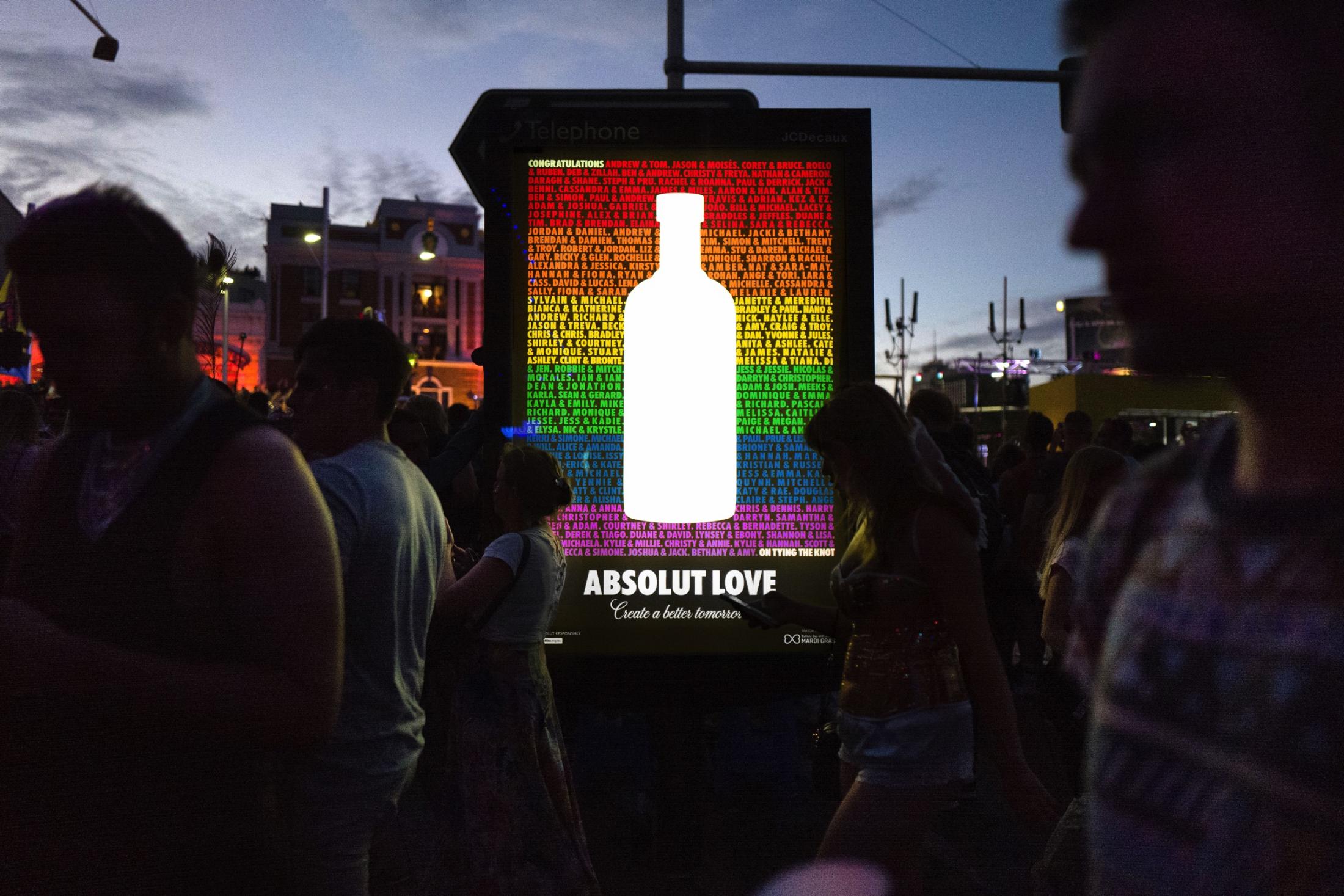Bored of your Ad campaign? See how these brands innovate again and again

Sticking with the same concept, characters or tagline across your marketing year in and year out might seem boring…but it can also build pretty solid brand recognition.
Think about it: long-running ad campaigns are often the ones that leave a permanent mark on our hearts and in our minds – who among us can think about insurance without thinking of meerkats, for example?
According to Al Young, Chief Creative Officer at FCB Inferno, building your campaigns around a singular concept or character is a way to increase trust in your brand. “There’s a funny thing about long-running ad campaigns. Their very familiarity makes us feel that all is well in the world,” he told The Drum.
However, there’s also a risk that comes with repetition. Any CMO with a successful campaign that’s been running a while will no doubt be wondering about its shelf life.
The irony is that it actually takes first class creative skills to pull off the same thing with panache again and again, but it is possible – and the rewards on offer are high. So before you dump your current campaign in favour of something new, think first about how you can innovate on what you’ve got.
The four case studies below reveal the ingredients of a successful long-running campaign and how you can build on its strength with each new piece of creative.
Specsavers: ‘Should’ve Gone to Specsavers’
The “Should’ve gone to Specsavers” line was dreamt up by Specsavers’ Creative Director Graham Daldry 16 years ago, but the ads are still making us chuckle today. Why? Because they take an idea with endless comic potential and use it to underline a serious message – if you can’t see properly you’re going to make mistakes.
Here are some of Specsaver’s best Mr Magoo moments:
- A vet mistaking his colleague’s fury hat as a flatlining cat
- A pretty young woman meeting her boyfriend at the train station but kissing an old man instead
- A retired couple mistakenly ending up on a Blackpool rollercoaster
- A dance instructor accidentally teaching a high energy routine to a group of bingo-playing OAPs – who join in
- A frustrated cat unable to get out his cat flap following its installation upside down
“Carefully picking our moments over the years to make sure the joke doesn’t become old means the overall impact of the advertising is greatly increased,” Paddy Adams, Head of Strategy at agency OMD told Campaign.
He added that the brand works hard to amplify the “Should’ve gone to Specsavers” message through social media by “reacting to significant, appropriate cultural moments”, like when the wrong winner was announced for Best Picture at the Oscars.
The #SHGTS campaign may be long-running but it still manages to showcase plenty of innovation, including clever collaborations with other telly favorites. Fawlty Towers’s Basil Fawlty was revived to attack a police car with a branch, while Postman Pat broke his only pair of glasses resulting in a morning of mishaps (if he had gone to Specsavers he would’ve got two pairs of glasses for the price of one).
And proving that you don’t have to be limited by your concept, Specsavers has developed a campaign within its #SHGTS campaign. The series of ads features a paparazzi photographer named Jason Shutter, who goes to great lengths to take pictures of celebrities but fails because of his nearsightedness.
Takeaway – Start with an idea that is inherently comedic to provide a catalyst for masses of material. If that idea relates directly to what your brand does, even better. Making consumers laugh, while effectively communicating your message is a well-established strategic move.
Direct Line: ‘Winston Wolfe’
For as long as there’s been advertising there’s been brand mascots. Just like logos, they provide a way for consumers to recognise brands at a glance.
Characters can be fictional, like the weakling Mr Muscle mascot of the 1980s (now reimagined as a muscle-bound animated superhero), non-human like Churchill the dog, or a real person like Gary Lineker for Walkers. They can even be already-famous characters appropriated from other TV shows, books or films.
This is the formula that’s won praise for insurance company Direct Line, which adopted the character Winston Wolfe from the cult film Pulp Fiction as its official frontman six years ago. It was a bold choice given that Wolfe, played by Harvey Keitel, is a ‘fixer’ called in to clean up messy situations (like murders).
Nonetheless, consumer research showed Winston Wolfe was viewed as the “ultimate fixer” and therefore represented Direct Line’s business perfectly. “It’s incongruous in one of the least trusted sectors in the world to have a gangster as your spokesperson but actually it’s a great metaphor for our intent – Winston Wolfe made very difficult problems disappear very swiftly and elegantly,” Direct Line Group’s Marketing Director Mark Evans told us in an exclusive interview.
The character doesn’t just star in Direct Line’s commercials; he acts as a North star for the company. In Direct Line’s offices they display posters asking ‘What would Winston Wolfe do?’. It’s become a mantra for staff.
Winston Wolfe can make even the trickiest of situations go away, and fast, which means Direct Line must live up to his reputation. Because of this, the company has had to introduce guarantees like emergency plumbers within two hours and cars repaired within seven days. The whole business has benefitted from the campaign. It continues to resonate with consumers too; the insurer achieves 54% more quotes per pound spent on TV compared to before they adopted the character.
Takeaway: Adopting a character that is not only the mouthpiece for your brand, but also embodies your brand’s tone and values, allows you to communicate so much without even saying a word. Taking it a step further and actually building your business around what your mascot stands for means they’ll always remain a relevant representative.
Red Bull: ‘Red Bull gives you wings’
Red Bull has been using the same style of witty animations to bring to life its tagline ‘Red Bull gives you wings’ for 30 years. It’s one of the longest running campaigns in the world and is used in more than 170 countries across the globe.
Highly visual and often dialogue free, the cartoons are so easily translatable they can be enjoyed and understood regardless of nationality, culture or age. Meanwhile, the ideas and themes the brand plays with are also universal.
“‘Red Bull gives you wings’ is a simple proposition that’s flexible enough to free your imagination and not handcuff creativity,” says Joono Simon, Executive Creative Director at Ogilvy & Mather.
He adds that the naivety of the drawings and simplicity of the humour is key to the campaign’s success. “Humour has stern codes to live by, and these simple gags have a certain lightness about them that gives them longevity and instant likeability.
“Although serialised ads are more prone to fatigue, the ads in the series from Red Bull are something that make you chuckle. Even the doodle-like illustration style is not so form obsessed and it seems to suggest that it is deliberately made weightless to be carried by the power of the gag,” he told the Economic Times.
While the ‘Red Bull gives you wings’ campaign is all about making people laugh, it also addresses a wide range of contemporary issues (or gives us amusing history lessons).
“The protagonists of these entertaining ads are just as varied as the topics,” says Hangar 7, which played host to an exhibition of Red Bull art last year. “Ranging from the disappointed frog prince and the crafty Napoleon, to the thirsty Dracula, through to the smart zebra, they all give the campaign its unmistakable character and enhance the sophisticated brand personality of Red Bull.”
Takeaway – Choosing a tagline and concept that’s flexible means your campaign can be adapted as your business grows and develops. The Red Bull brand now spans a ton of different activity, from extreme sports to music, but its marketing has been able to successfully flex to meet its varying needs.
Absolut Vodka: Absolute print campaign
For an example of endless ingenuity around a single idea, take a look at Absolut Vodka’s print campaign, first launched in 1980.
It all started when the advertising agency TBWA created an ad for the vodka brand that featured a bottle of its product with a halo above it and the words “Absolut Perfection” below. The ad was an instant hit, and spawned one of the most iconic print campaigns of all time, with the Absolut bottle depicted in more than 1,500 different ways.
If you tore one of these adverts out and stuck it to your wall as a teenager, you’re certainly not alone. The campaign was so successful in the US that Absolut grew its sales from 10,000 cases in 1980 to 4.5 million in 2000.
Each image is accompanied by a clever tagline tying the brand to the concept, i.e. an ad where the door of a portable toilet is shaped like a bottle is captioned “Absolute Festival” . The beauty of the idea was it could be adapted to target any current event or subset of consumers.
For example, during the World Cup Absolut created an ad showing a football formation drawn up in the shape of the bottle. Then there were the many campaigns built around a geographical location, such as an aerial shot of Manhattan (which, of course, happens to look like a bottle from above). These creatives helped Absolut connect with consumers on a more personal level in a time before personalisation.
Although the print campaign officially came to an end in 2000, the concept seems to have been revived in recent years, with this youth-focused series of ads in 2016, and this outdoor advertising campaign around the 2019 Gay Mardi Gras in Australia. Perhaps it’s a case of ‘if it ain’t broke, don’t fix it’?
Takeaway – Despite having no distinct shape, Absolut made its bottle the most recognisable bottle in the world. As humans, we’re predisposed to look for shapes and meaning in vague stimulus, like seeing a face on the moon (it’s a phenomenon known as pareidolia). Tapping into our psychological tendencies is a clever way to maintain consumers’ interest over a long-running campaign.
A final thought
Long-standing campaigns can be incredible platforms for brands, enabling them to tackle any and all communication challenges in a way that hooks consumers again and again.
As these examples show, campaigns can go on for years – decades even- without getting stale, providing the idea has enough potential in the first place and is adapted and reinvigorating each time it’s used.
Be sure that your existing concept is resonating with your target audience before committing to it for the long run. And if you’re happy with the campaign results, think outside the box and riff on the same concept or idea (all the while checking in with consumers to ensure you’re on the right track, of course). With Attest it’s easy to understand how much love consumers have for your campaigns. Check out our complete guide to creative testing.
Tell us what you think of this article by leaving a comment on LinkedIn.
Or share it on:
